Bell-shaped flowers, characterized by their flared opening and narrow base, add elegance to any garden. These blooms, such as foxgloves and bluebells, attract pollinators with their enticing shape and often delicate hues. Please join us in admiring 56 beautiful bell-shaped flowers through this article.
Different Types of Bell-Shaped Flowers
Clarkia amoena

Native to western North America, Clarkia amoena, sometimes known as the satin flower, is an annual plant that grows from central California to British Columbia. Its 4 petalled flowers, which are 2 to 3 inches in diameter, display colors of red, pink, or lavender and are sometimes adorned with a dot or blotch at the base of each petal.
Comfrey
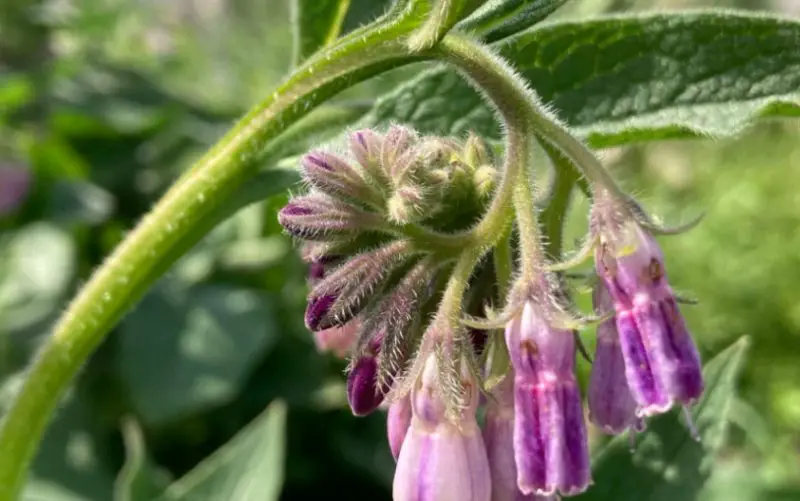
Symphytum officinale, formally known as comfrey, is a hardy perennial that grows up to three feet tall and two and a half feet broad. It is also referred to as knitbone or boneset. Mid-spring to early summer is when the garden is graced with pendulous clusters of tubular, flower-like blossoms that range in color from white to purple to pink.
Convallaria
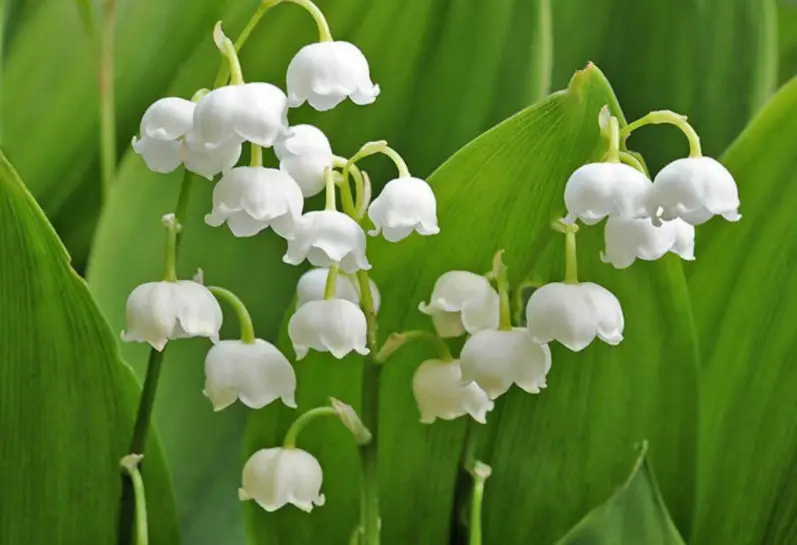
Convallaria majalis, usually referred to as Lily of the Valley, is the only species of the genus Convallaria in the Asparagaceae family. It is a fragrant perennial herbaceous plant. This rhizome herb grows up to 8–12 inches tall and forms a thick ground cover.
Coral bells
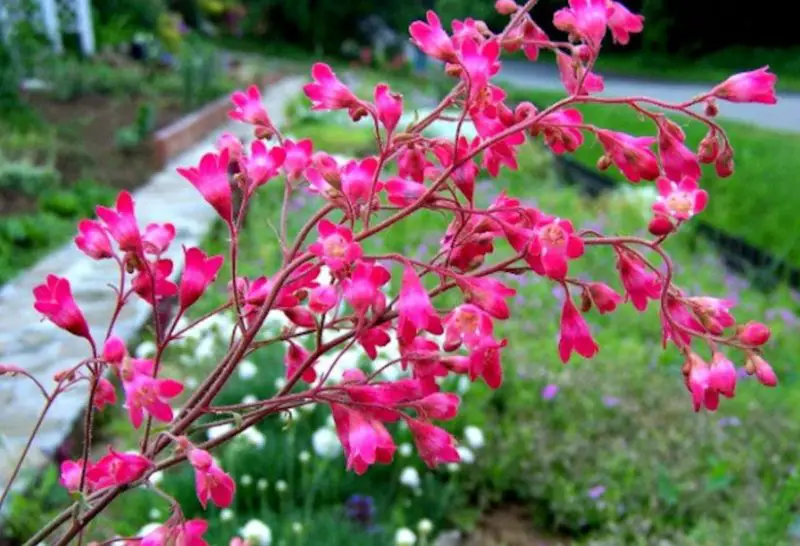
Coral bells (Heuchera Americana) come in a variety of colors; some are grown specifically for their profusion of blossoms. Originally, they were soft-colored bells with small flowers. Their tiny, greenish-white blooms, which usually reach a height of 18 to 24 inches in late spring and early summer, cluster on thin stalks that rise above the leafy pile.
Cowberry

In Alaska, Canada, Russia, and the Northern Baltic, cowberries are harvested in the wild and used in many delicious recipes. This genus of plants, which has about 450 species, is characterized by small, bell-shaped flowers that are 3 to 8 mm long and range in color from pale pink to white. These blooms are usually a wonderful sight in their natural environments, occurring in the early summer months.
Daffodil
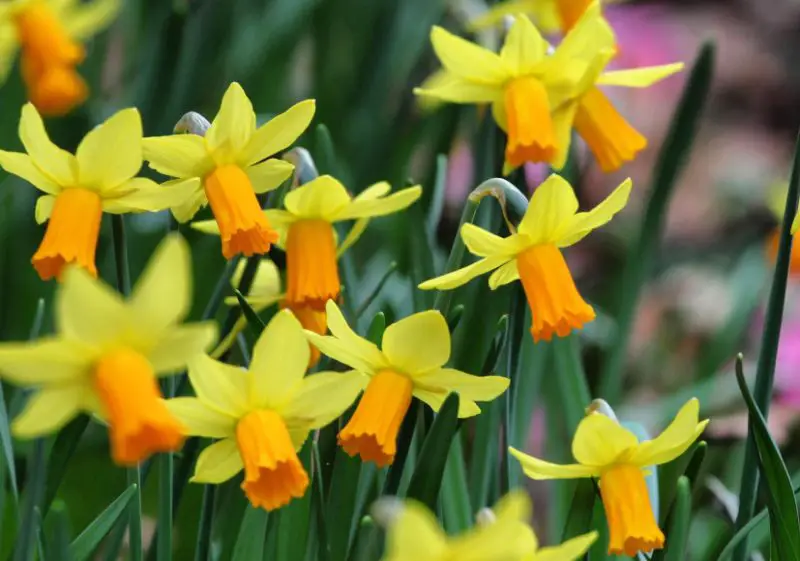
Evergreen favorites, daffodils herald the approach of spring with their distinctive trumpet-shaped blossoms that remain unaffected by snowfall. Once golden in color, they now come in a variety of shades, such as pink, green, orange, yellow, and white.
Desert Rose
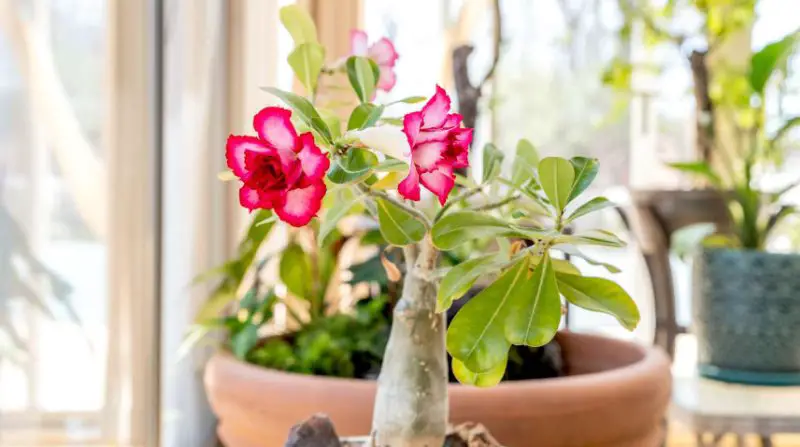
The Desert Rose, a deciduous evergreen shrub belonging to the Gentianales order, possesses a striking stature that ranges from 3.3 to 9.8 feet. It is often used as a decorative plant and produces eye-catching plumeria-like blossoms.
Desert Snowberry
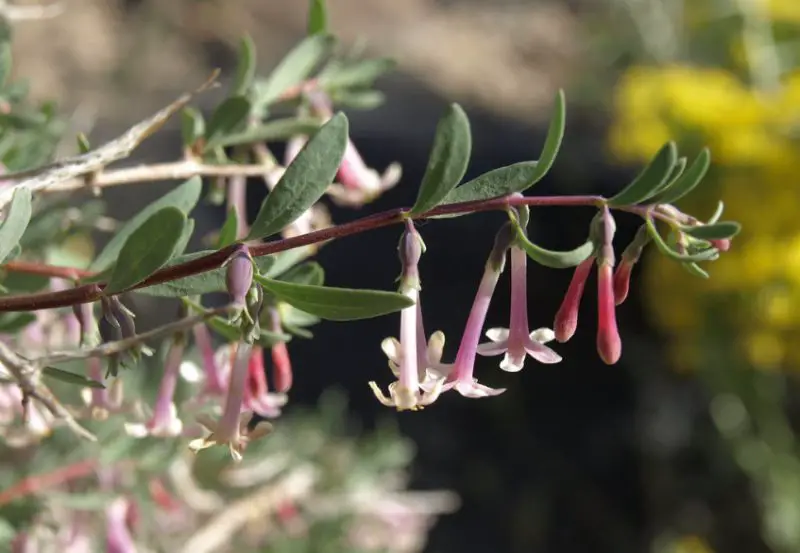
In the Dipsacales family, the tall, upright Desert Snowberry (Symphoricarpus longiflora) grows well in dry conditions. The delicate beauty of arid environments is enhanced by its fragrant, tubular blooms, which appear either alone or in pairs along the leaf axils.
Diascia

Twinspur, or diascia, is a delightful plant with vivid spring blooms in lovely shades of pink, lavender, orange, white, and coral. This little shrub gives garden borders and flower beds a refined touch. During the flowering season, it produces a variety of salmon, purple, white, orange, or pink flowers on its racemose apical inflorescence.
Elephant Trunks
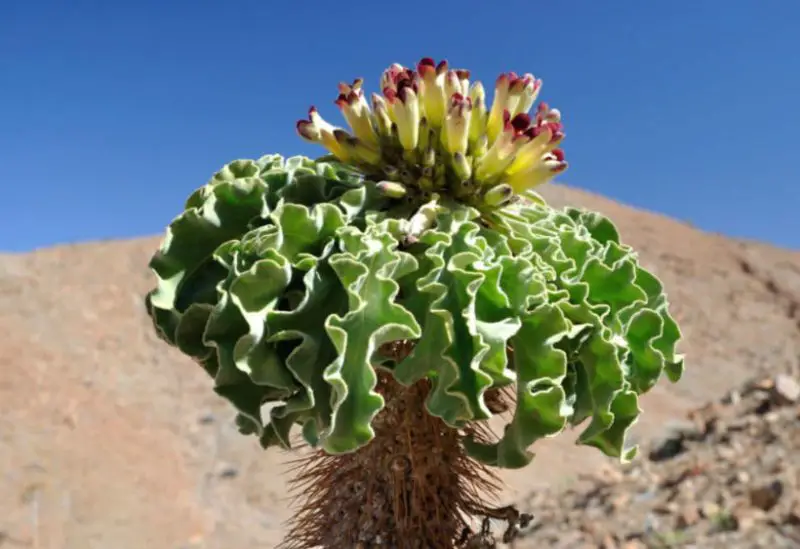
Elephant trunks, or Pachypodium namaquanum as they are scientifically called, are highly prized succulents of the Apocynaceae family that are native to the Namib desert in the Northern Cape and southern Namibia. They are referred to as “halfmens” in local folklore because of their unusual appearance, which makes them resemble half-human, half-tree creatures.
Epigaea
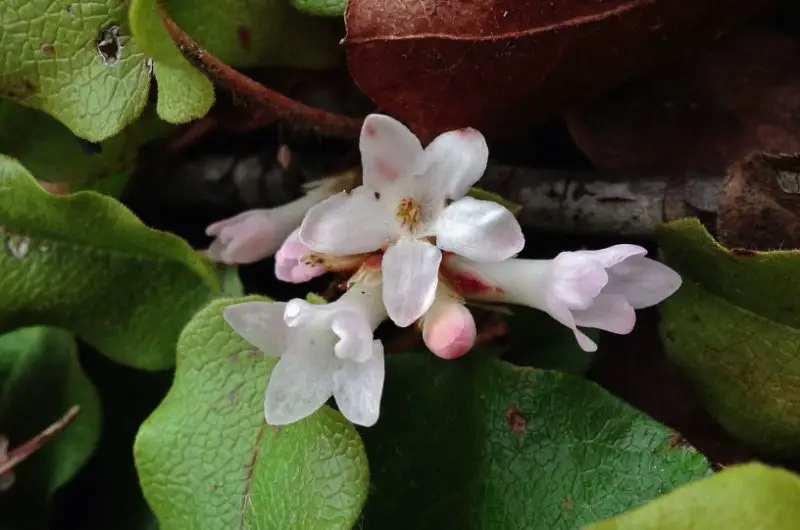
In woodland and peaty environments, Epigaea, a native forest shrub in the Ericaceae family, generates evergreen carpets. It is unique to eastern North America and the only one in its genus. The blossoms of Epigaea, which range in color from dark pink to pale pink or white, give its natural woodland setting a delicate appeal.
Eustoma Grandiflorum
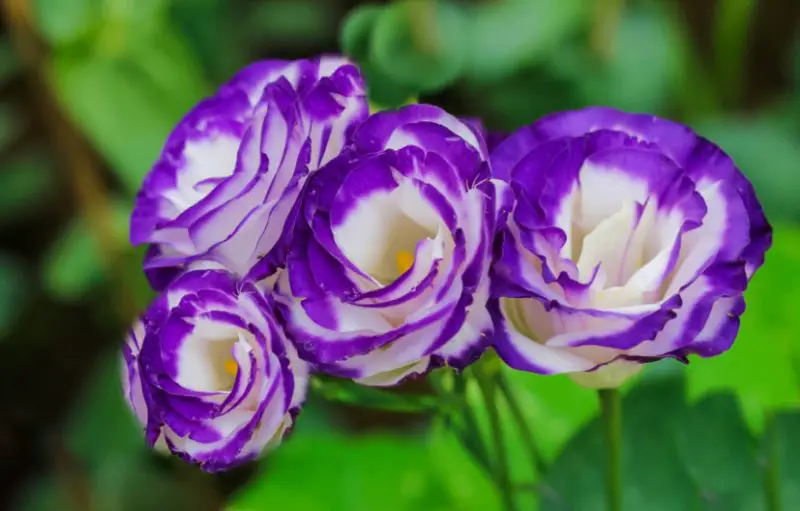
One of the best options for elegant flower designers is Eustoma grandiflorum, a biennial beauty. It has sophisticated buds and ruffled petals that scream beauty and adaptability. It gives sophistication to any arrangement and is available in a variety of colors, such as pink, purple, blue, white, and lovely two-tone hues.
Forsythia
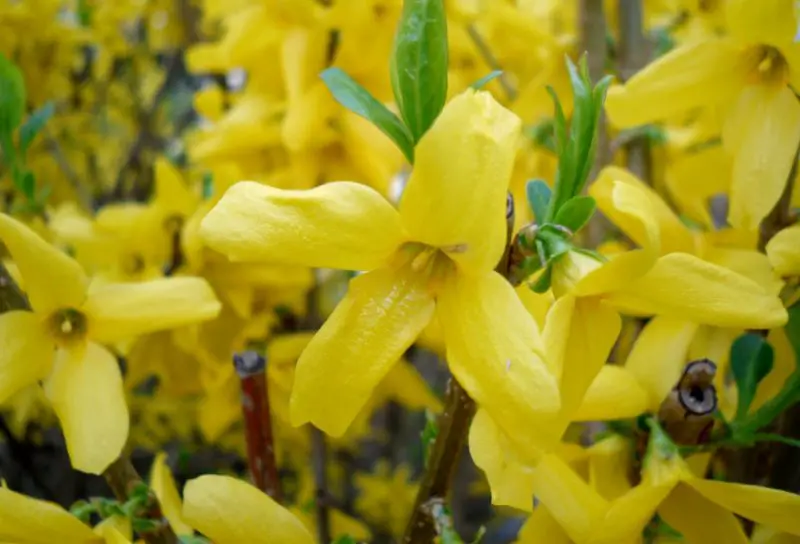
Often regarded as the first sign of spring, forsythia explodes with vivid yellow blossoms before its leaves open, bringing breathtaking golden highlights to landscapes. An early display of flowering provides a colorful taste of what’s to come, bringing hope and warmth to the otherwise bleak winter scene.
Four O’clock
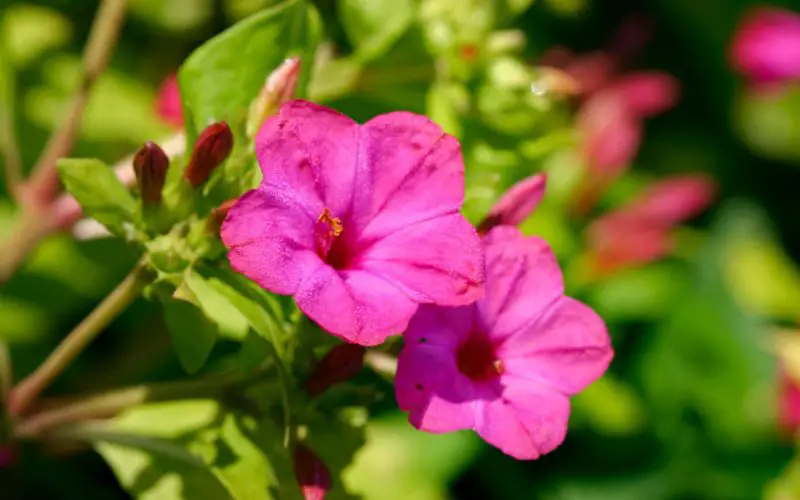
The ever-popular Four O’clock provides a visual feast with its fragrant tubular blossoms that come in an array of colors and designs. It is not unusual to witness several hues of flowers blossoming on one plant. Up to 6.5 cm long and 3.5 cm wide, these tubular flowers are embellished with 5–6 stamens, they come in colors of red, pink, or white.
Foxglove
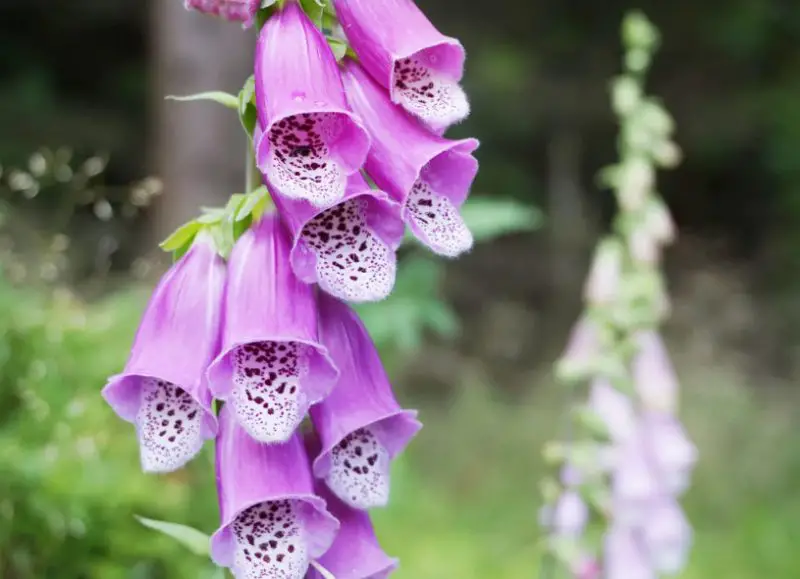
Scientifically referred to as Digitalis purpurea, foxglove is a native of Western Europe and a short-lived perennial or biennial plant of the Plantaginaceae family. Tightly crowded along each spike, its hanging, funnel-shaped flowers, which are 2-3 inches long and usually purple to dark rose-pink with white and purple dots inside, provide a spectacular display.
Hollyhocks
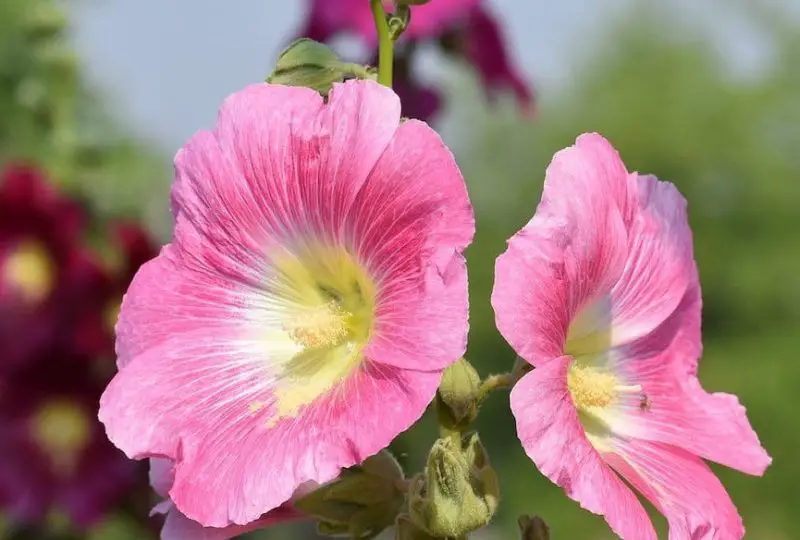
The iconic cottage garden plant, hollyhocks (Alcea rosea), adorns the summertime landscape with their towering presence and vivid blossoms. available in a variety of hues, including red, purple, pink, blue, yellow, white, and even black.
Japanese Primrose

Because of its resemblance to cherry blossoms, the Japanese primrose, also known as sakurasou in Japan, represents longing and first love. It symbolizes the delicate beauty and sentimentality prized in Japanese culture, with hairy petioles measuring 1.4-4.7 inches and leaves grouped in rosette formation.
Japanese Snowbell
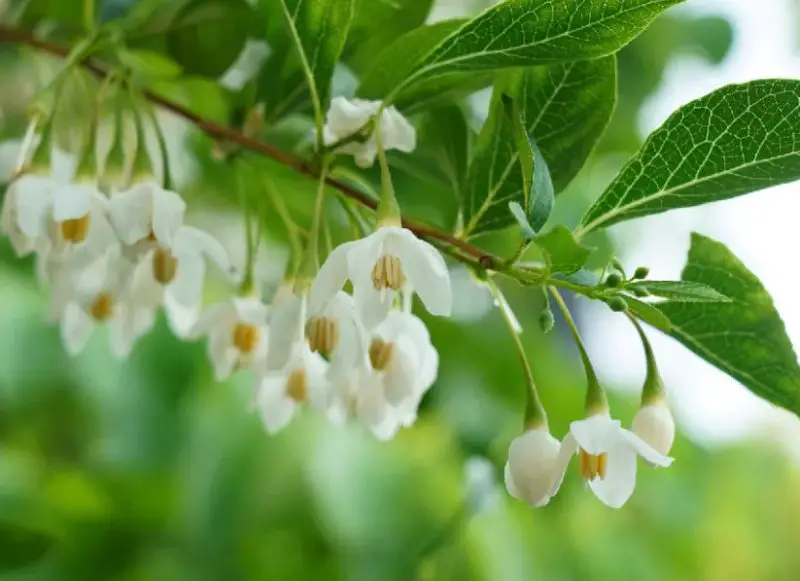
At a height of 15 to 25 feet, the Japanese Snowbell (Styrax japonica) is an elegant deciduous tree. Its simple, alternating leaves measure 2.5-9 cm in length and 1.3-4 cm in width. They are broad-elliptic to elliptic-oblong in shape and have a medium to dark green color.
Kaffir Lily
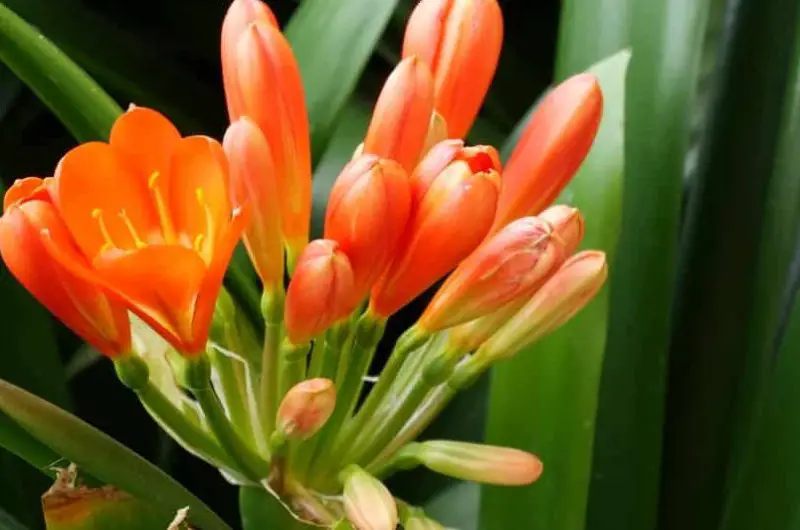
The Kaffir Lily (Clivia miniata) is a magnificent sight, announcing the approach of spring with its vivid buds. Its eye-catching funnel-shaped blossoms are colored orange, red, or yellow and are grouped in umbellate flower heads.
Kalmia
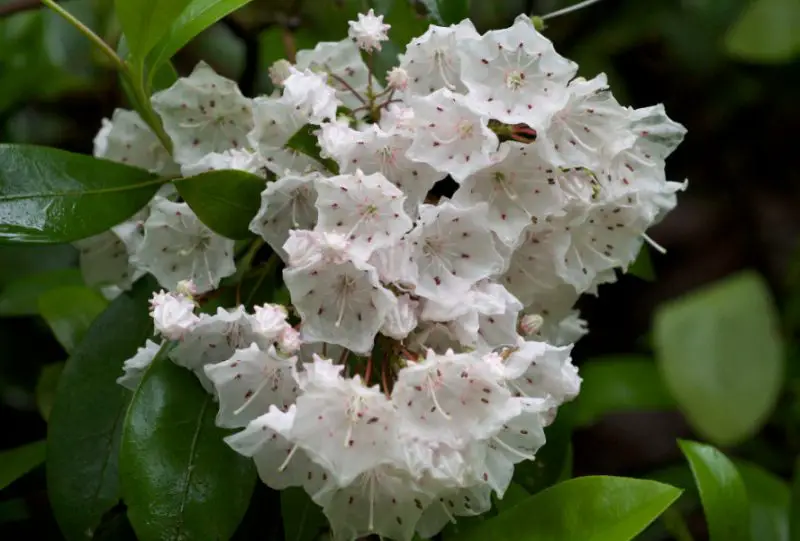
Mountain laurel, or Kalmia, is a plant that grows well in a few wild places around the world. Its one-inch-wide, cup-shaped flowers have five sides and are colored in shades of white to pink, with purple specks on the inner petals frequently.
Kennedia
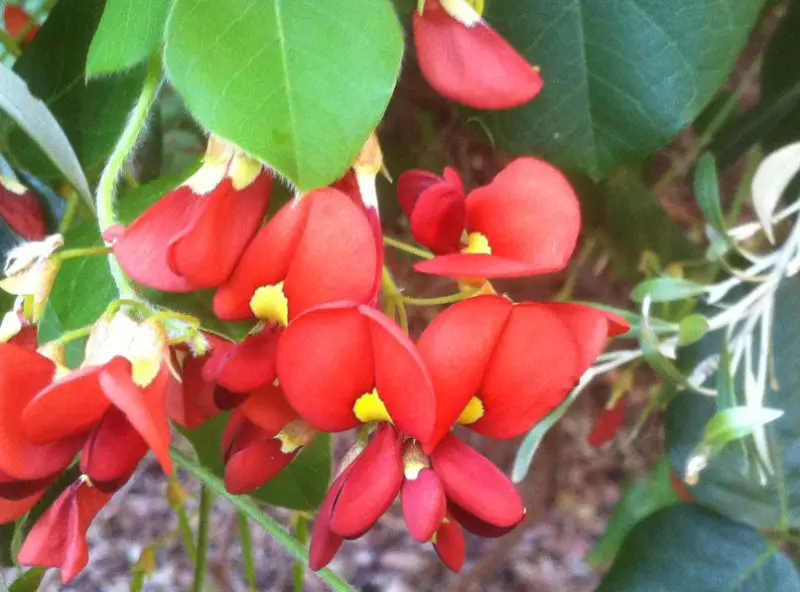
Kennedia is an Australian genus of flowering perennials in the Fabaceae family that includes about 13 species. Although they occasionally droop as the blooms open, this plant’s spectacular flowers, which are usually purple, blue, red, or almost black, are frequently crowded in the leaf axils and accompanied by leaf-shaped bracts at the base, making a dramatic floral display.
Krantz Aloe
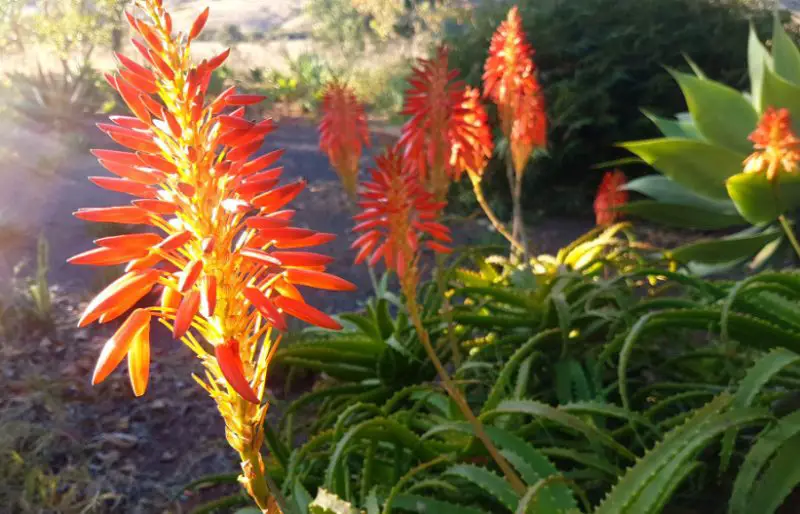
The perennial succulent Krantz Aloe (Aloe arboresens), which belongs to the Asparagales group, can grow up to two or three meters tall. This plant’s bitter juice has therapeutic qualities; Aloe mixtures were used to heal burn patients during World War II, demonstrating the plant’s historical importance in medicine.
Lily
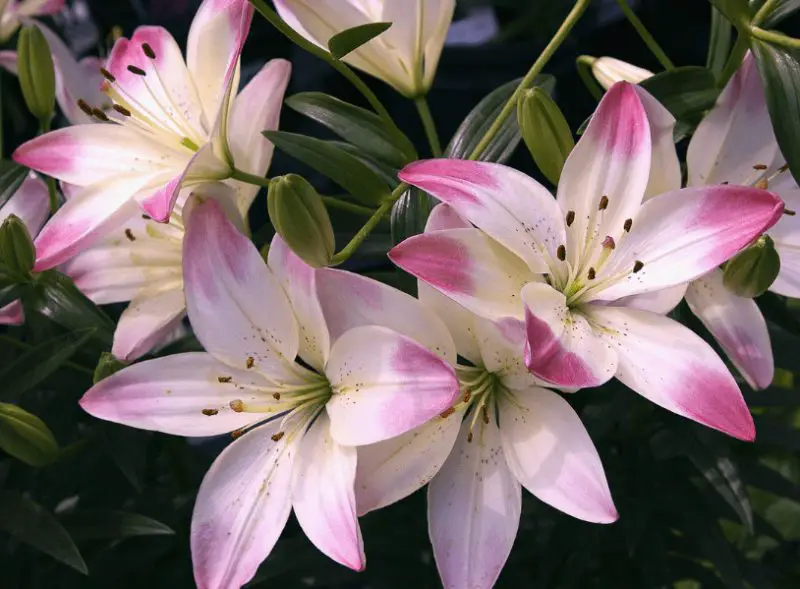
Favorite perennials, lilies are among the most well-known floral plants in horticulture. Beyond their breathtaking looks, these flowers enliven any garden with their alluring scents and vibrant spectrum of colors, which include pink, purple, red, orange, white, and yellow.
Mandrake
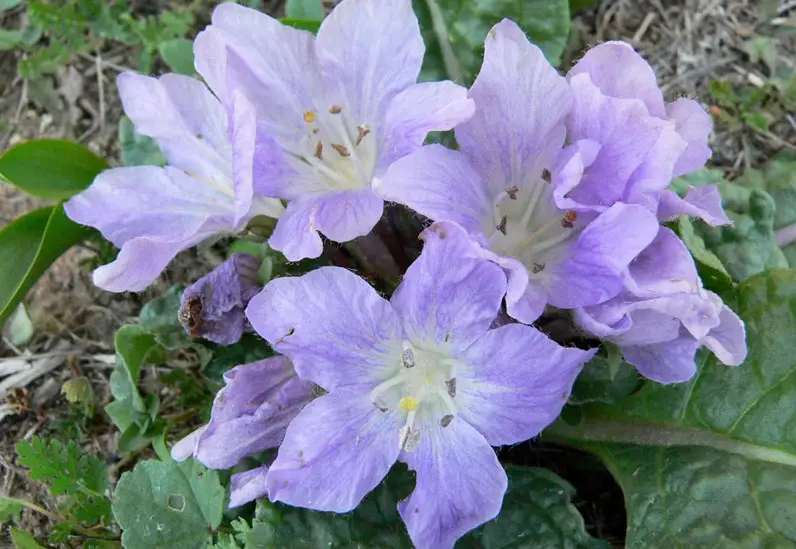
Mandrake, often known as “Satan’s apple,” is seeing a renaissance in American gardens thanks to the Harry Potter series’ depiction of it. Blooming near the middle of the plant in spring, the lone flowers have bell-shaped crowns of five petals and range in color from purple to green-yellow.
Montbretia
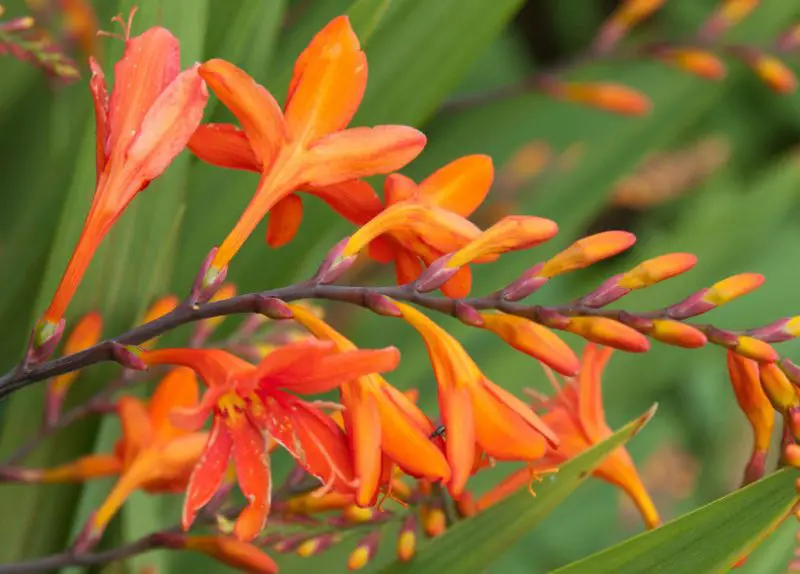
Ever-enchanting, montbretia features vivid yellow, orange, crimson, and scarlet tubular blooms together with ornamental clusters of sword-shaped, erect leaves. Blooming from midsummer to midfall, it has an exotic beauty and fascination because to its exquisite panicle arrangement, which lasts for 5 to 8 weeks.
Amaryllis

Perennial in nature, amaryllis accompanies special events like Christmas with its magnificent blooms, signifying joyous celebration. This flower is symbolic of many things beyond just the season. It comes in a variety of colors, including purple, orange, white, yellow, and red. It represents grace, tenacity, and brilliant love. An evergreen symbol of happiness and sentiment, the amaryllis enchants with its classic beauty.
Arbutus

The Ericaceae family of flowering plants, which includes 12 species of arbutus, is found around the world in temperate climates. These shrubs/trees have bell-shaped pink or white flowers in loose racemes. They also grow berries that are meaty and sometimes orange or red with an uneven surface. Landscapes throughout North America, Western Europe, the Mediterranean, and the Canary Islands are made more beautiful by their presence.
Ardisia
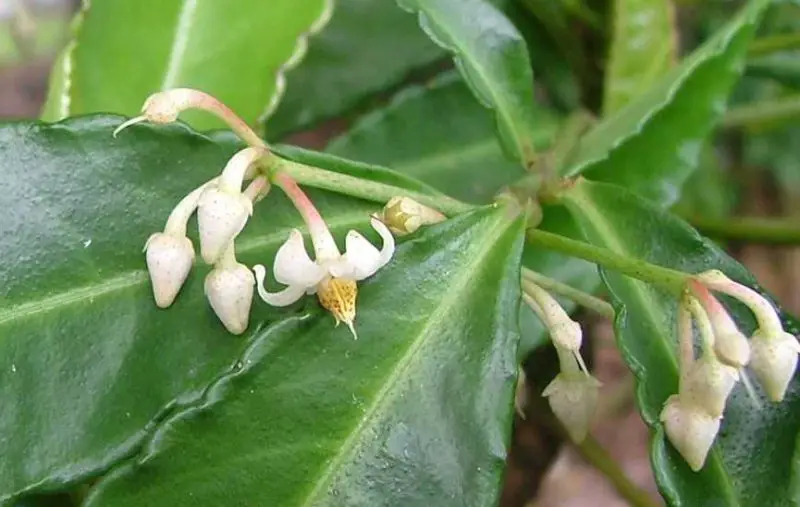
Ardisia, also referred to as coralberry or marlberry, is a member of the Primulaceae family, which was once known as Myrsinaceae. These shrubs/trees, of which there are over 700 identified species, have bell-shaped flowers with a crown of pink or white petals and four or five green sepals.
Balloon Flower
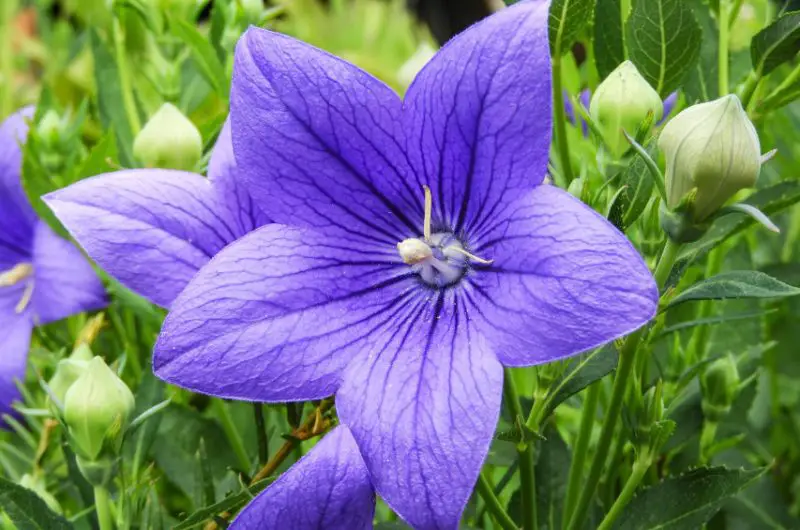
The blue balloon flower, sometimes referred to as the Japanese, Chinese, Korean, Japanese bellflower, or Japanese snowdrop, is a perennial plant in the Campanulaceae family. Together with lobelia and wood hyacinth, it is the only species in the Platycodon genus.
Bells of Ireland

Despite their name, bells of Ireland are actually from Turkey, Syria, and the Caucasus. For many, it is impossible to describe their scent. Their height is what makes them so striking—they tower over other blossoms.
Bindweed
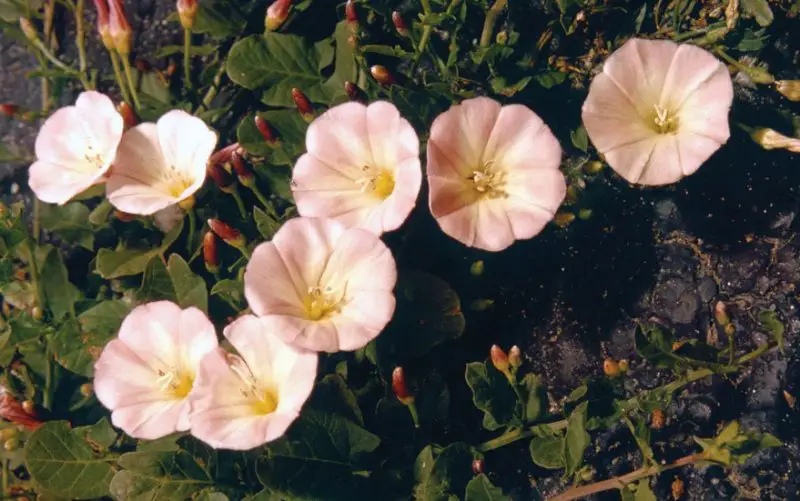
Convolvulus arvensis, the scientific name for bindweed, is a perennial herbaceous climber that is indigenous to Eurasia. It has spread to many areas where it was accidentally introduced, frequently through contaminating seeds used for horticulture and agriculture. Even though it has a lovely appearance, bindweed has the potential to become invasive and difficult to manage in afflicted regions.
Calibrachoa
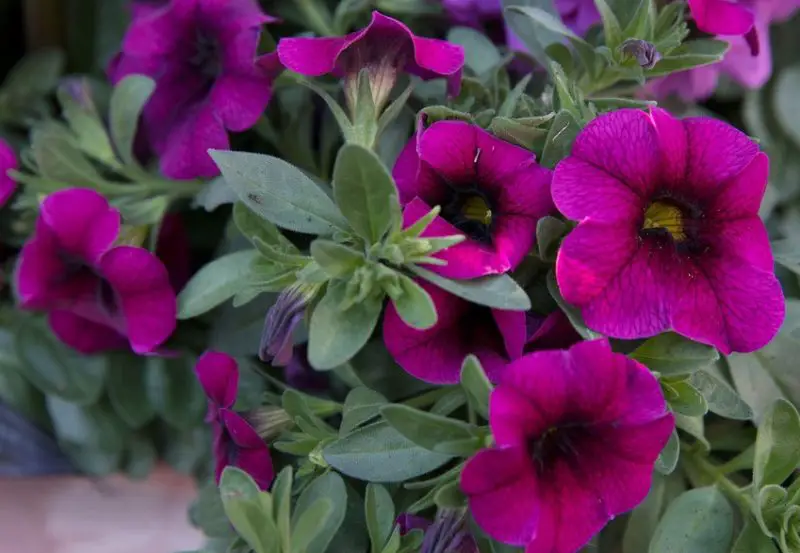
The robust yet delicate calibrachoa flower is frequently seen cascading from planters or hanging baskets. Even though it’s not a popular option for formal arrangements, giving it as a potted plant has significant symbolic meaning. It is a wonderful offering for any occasion because of its bright blossoms, which add beauty and delight to any area.
Campanula
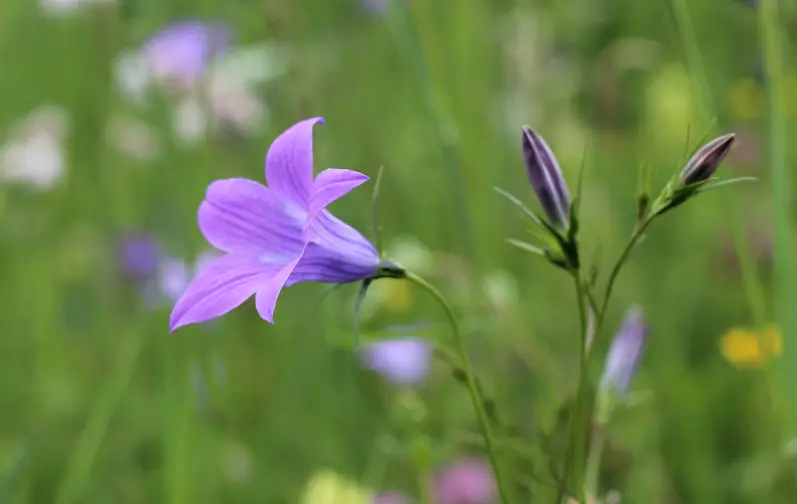
Once a common roadside flower, campanulas now adorn meadows all over the world with their vibrant purple or blue colors. There are about 500 species in this genus, and they live in the northern hemisphere’s temperate zones.
Canterbury Bells
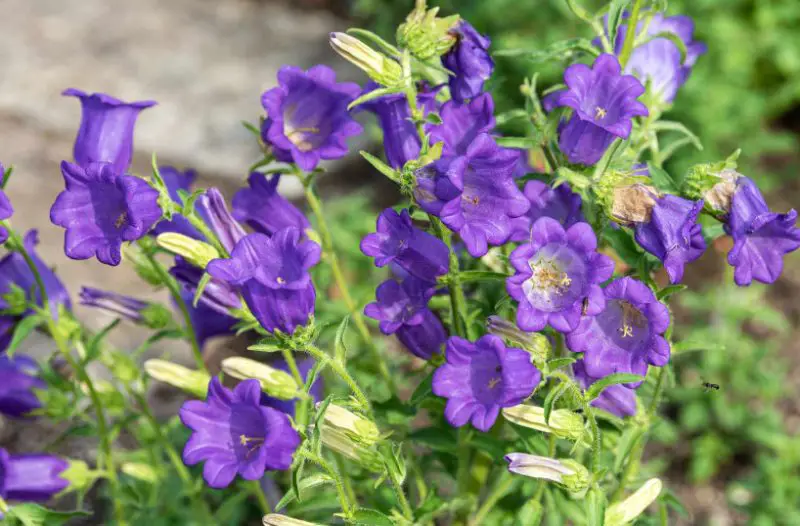
The huge, bell-shaped flowers of Canterbury Bells, a biennial plant, add beauty to natural environments and cottage gardens. Scientifically referred to as Campanula medium, these blossoms are native to southern Europe and have been adorning gardens since the 16th century.
Cardinal flowers
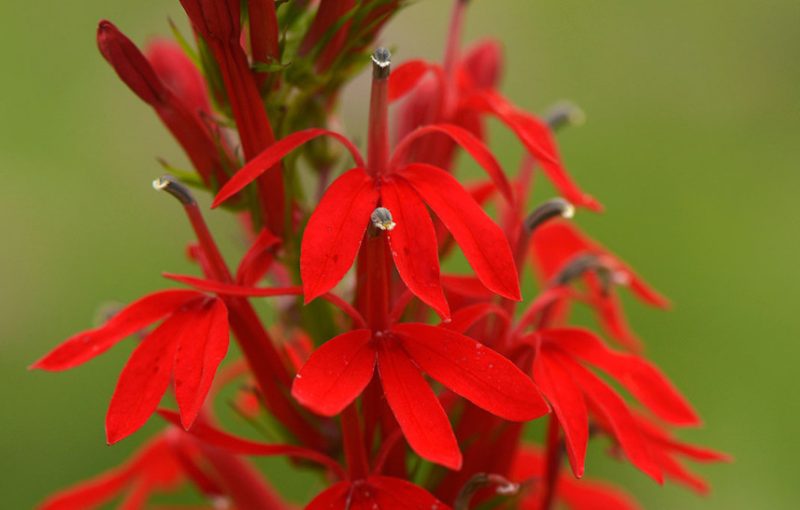
Perennial plants of the Lobelia genus, cardinal flowers grow well as solitary specimens in borders, mixed beds, and natural landscapes. Lobelia, of which there are over 60 kinds, is most known for its beautiful blue bell-shaped blooms that are grouped in loose clusters or spikes.
Casa Blanca flowers

A genus of about 100 species of herbaceous and bulbous perennials, Casa Blanca blooms come in a variety of colors, ranging from white and pink to purple-red, and some even have a golden yellow tint. Their medium texture adds beauty and variation while blending in easily with garden surroundings. Casa Blanca is a product of North America, South America, and Europe.
Nierembergia
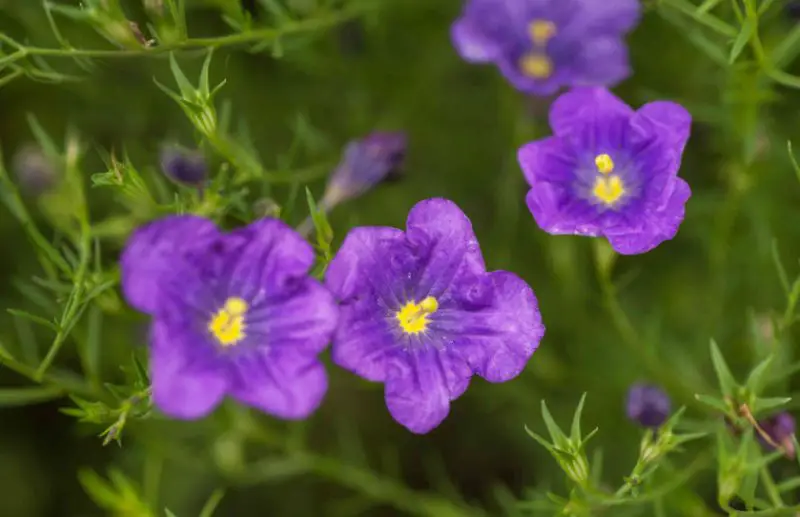
Nierembergia is a hardy annual or perennial that looks great in borders and pots because of its neat growth habit and cup-shaped flowers. It has short, slender leaves with purple or bluish blooms at the tips. This lovely plant can grow to a maximum height of 6 inches and a maximum width of one foot.
Pasque flower
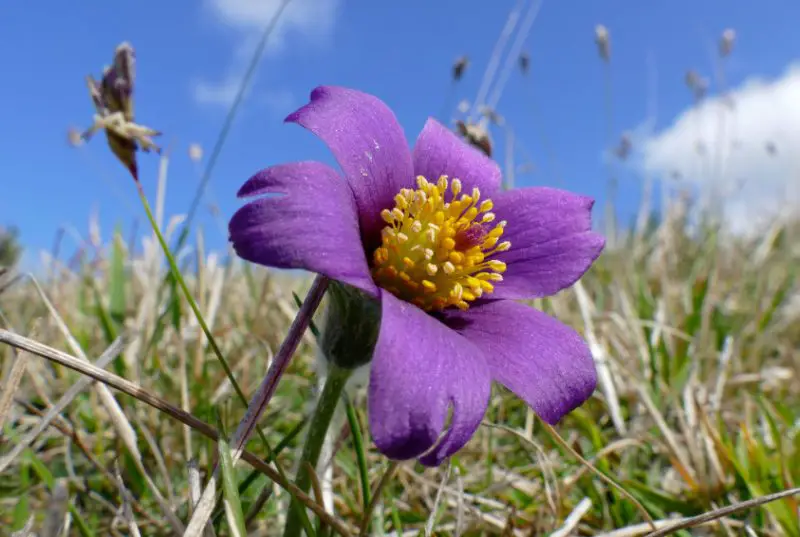
The entrance of spring is signaled by the pastel flowers (Pulsatilla vulgaris), which frequently bloom prior to the full emergence of their fern-like foliage. These blossoms, which are usually purple but some cultivars may have red, pink, or white tones, offer a pop of color to the early spring scenery.
Polemonium
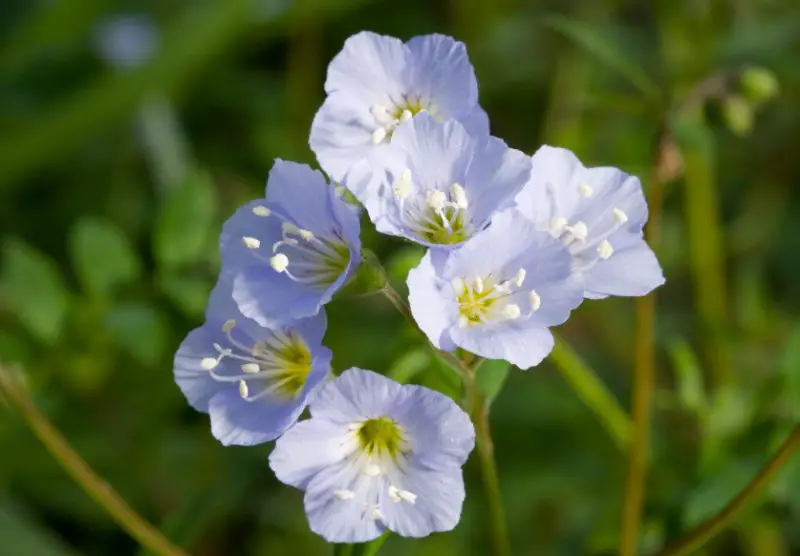
A perennial plant in the Polemoniaceae family, Polemonium is often referred to as Jacob’s ladder (Polemonium caeruleum). It grows well in meadows, grasslands, and moist woodlands. It is native to temperate parts of Asia and Europe. Available in variations that are pink, blue, white, or yellow.
Privet
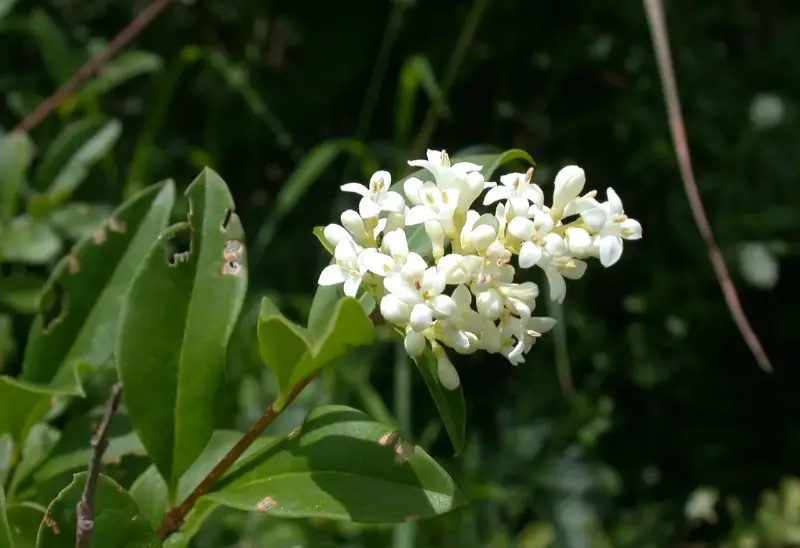
With its dark green foliage, privet (Ligustrum vulgare) is a popular choice for dense living fences or privacy hedges. Deciduous, semi-evergreen, or evergreen privet can be found depending on the cultivar and region. This genus, which has about 50 species, is native to Asia, North Africa, and Europe and consists of upright shrubs that can develop into small to medium-sized trees.
Qantuta
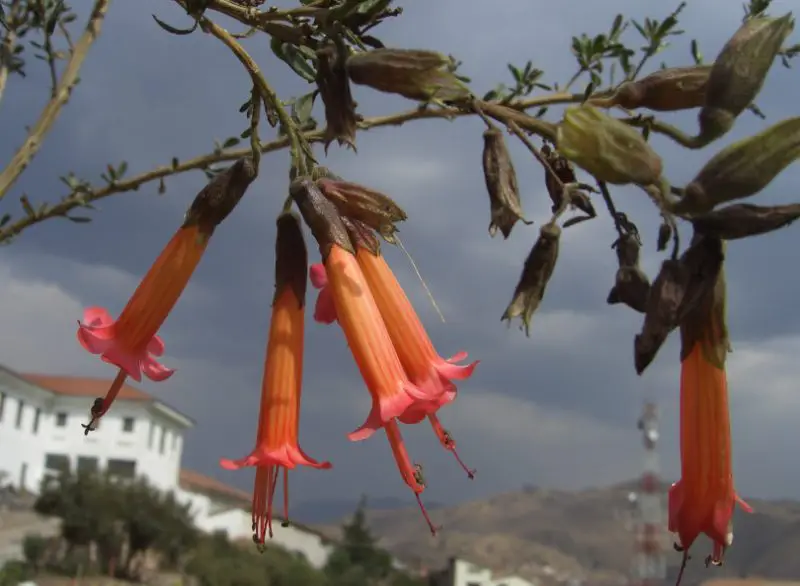
Qantuta, scientifically known as Cantua buxifolia, is an evergreen shrub belonging to the order Ericales. Native to the high valleys of the Yungas and Andes mountains in western South America, this plant can reach heights of up to 13 feet, adding a touch of natural beauty to its native habitats.
Royal Bluebell

Within the Campanulaceae family, the Royal Bluebell (Wahlenbergia gloriosa) is a perennial herb. The plant’s unique appearance is enhanced by its small, dark green leaves, which are placed in an opposite orientation and have oblong, wavy margins that spread towards the apex.
Wild Dagga
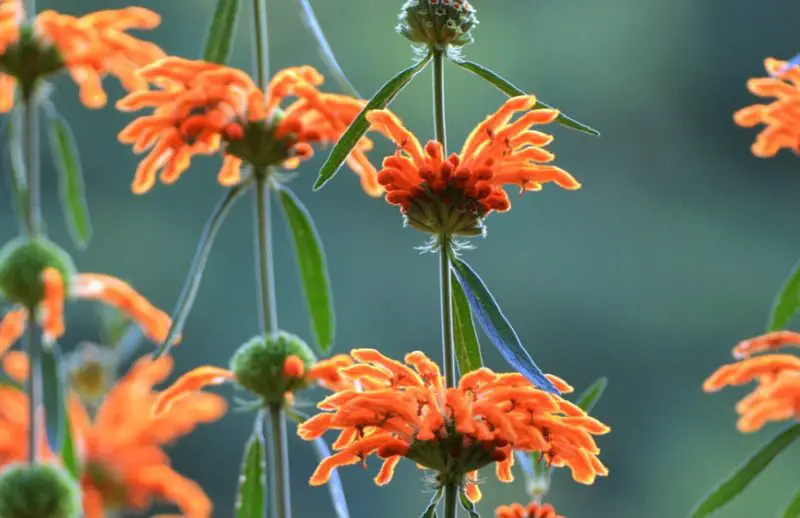
The Lamiaceae family includes the flowering shrub known as wild dagga (Leonotis ocymifolia). This hairy bush, which grows to a height of 1-2 meters, has medicinal value. It has been traditionally utilized by many ethnic tribes to relieve flu-related aches and pains.
Wild Narcissus
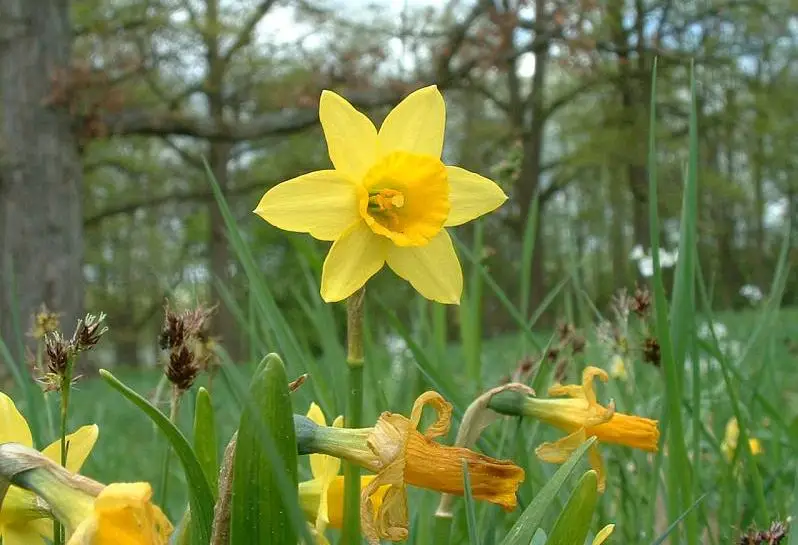
Originating in Central and Southern Europe, the wild narcissus, or Narcissus poeticus, is a perennial flowering plant belonging to the Asparagales group. Though the plant is prized for its beauty, it’s important to remember that it is deadly, with the most dangerous parts being the bulbs.
Scilla

About 80 species of bulbous herbaceous perennials in the Asparagaceae family make up the Scilla genus; many of them bloom in the early spring and fall. Scilla flowers, which are frequently grown as decorative plants, have six tepals that resemble petals and each has a unique dark blue midrib.
Shooting Star
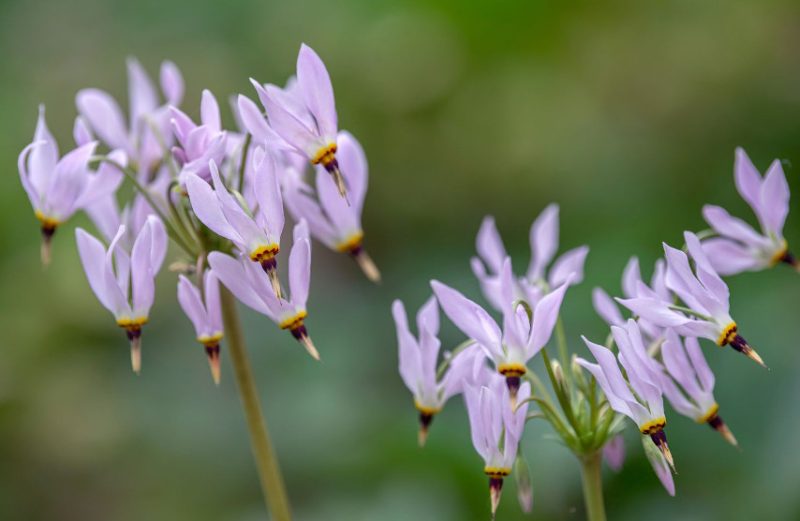
The popular native North American wildflower known as “Shooting Star” (Dodecatheon media) grows well in a variety of settings, including meadows, open forests, and prairies. There are more than 17 species of plants in the genus Dodecatheon, of which this one is a member of the Primulaceae family.
Solomon’s Seal
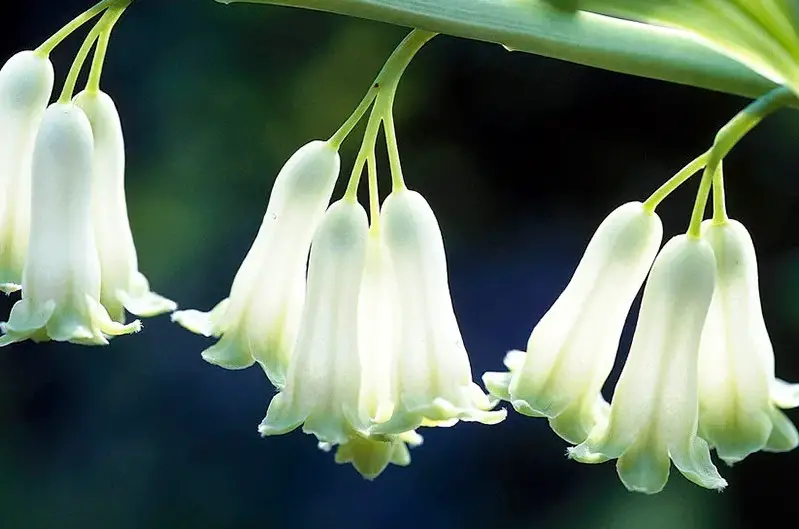
Polygonatum biflorum, also known as Solomon’s Seal, is a classic shade plant for gardens. Its arching stems provide garden beds a striking architectural element. This perennial grass is a member of the Asparagaceae family, which includes about 60 species.
Stephanotis
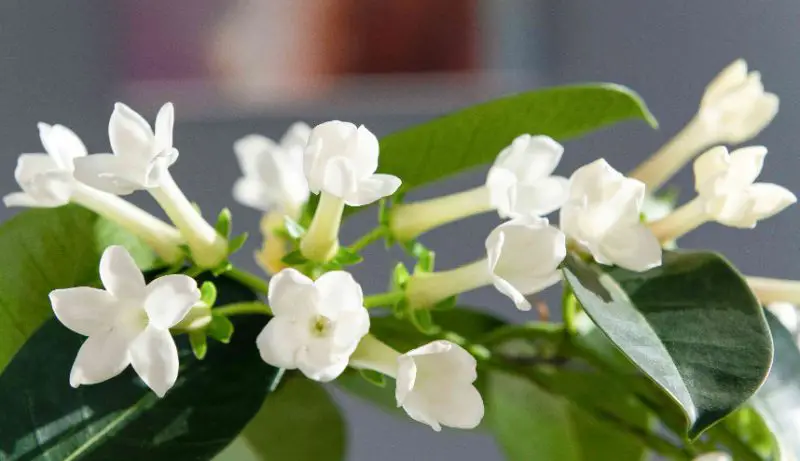
The genus Stephanotis, which belongs to the Apocynaceae family, has about fifteen species of climbing plants that are native to Southeast Asia and Madagascar. The plants Stephanotis are prized for their fragrant, waxy, tubular white flowers; their opposing, oblong to elliptical, leathery leaves can be observed.
Thornapple
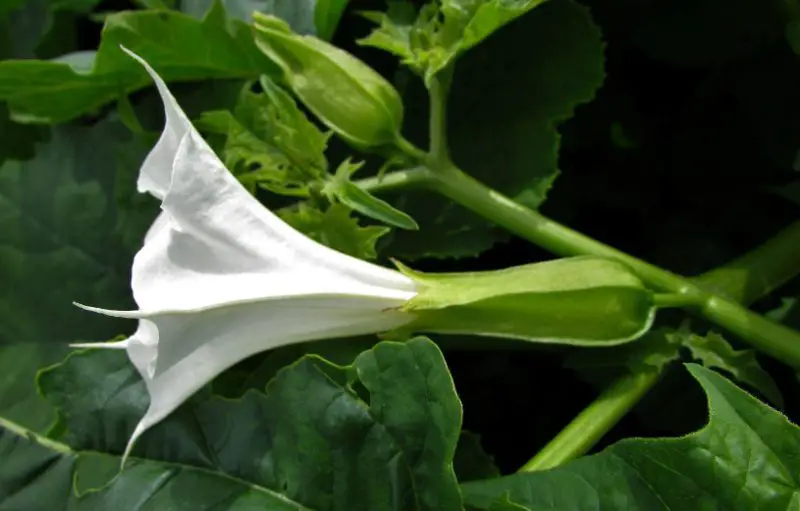
Thornapple (Datura stramonium), also known as Jimson weed, devil’s trumpet, or devil’s snare, is a shrubby flowering plant in the Solanaceae family. With approximately 10 species, it thrives in tropical and temperate climates worldwide, known for its distinctive and potentially toxic properties.
Throatwort

With its dense clusters of blue-violet flowers, the annual and perennial plant throatwort (Trachelium caeruleum) enchants and lends gardens and arrangements a delicate, lace-like appeal. The flowers on the white varieties fade more quickly, despite the fact that they are available in a variety of colors, including green, pink, purple, blue, and white.
Thunbergia
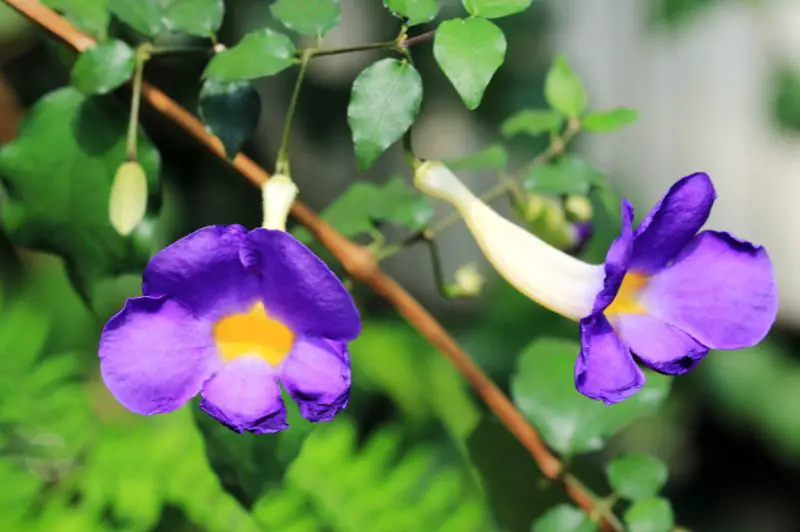
Thunbergia, often hailed as “the most gorgeous vine in the world,” resembles morning glory from afar, with similar flowers up close. Thunbergia grandiflora, a member of the Acanthaceae family, is just one of the 100 to 150 species of flowering plants within the Thunbergia genus.
Toad Lily
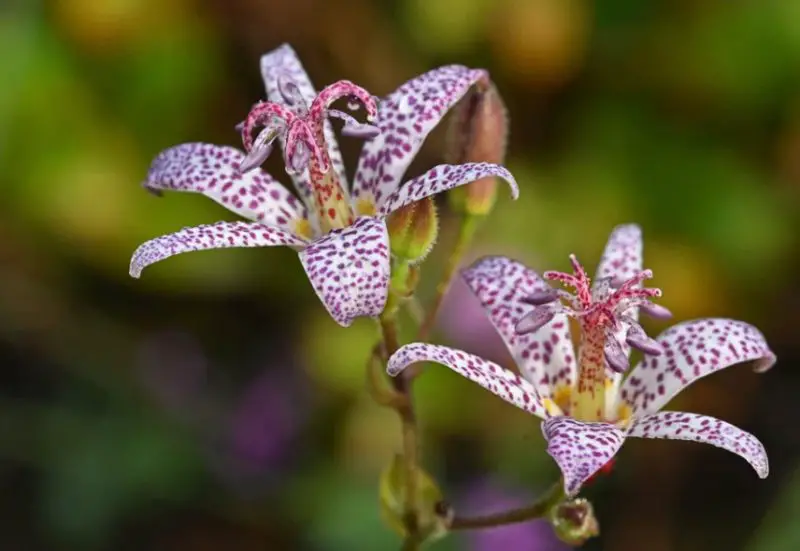
The perennial Toad Lily (Tricyrtis affinis), a member of the Liliaceae family, is native to Japan. Its purple-spotted white flowers are ornamented with six free tepals arranged in two whorls on each blossom. This plant, which stands for fertility, is native to Japan and grows to a height of 30 to 60 cm.






